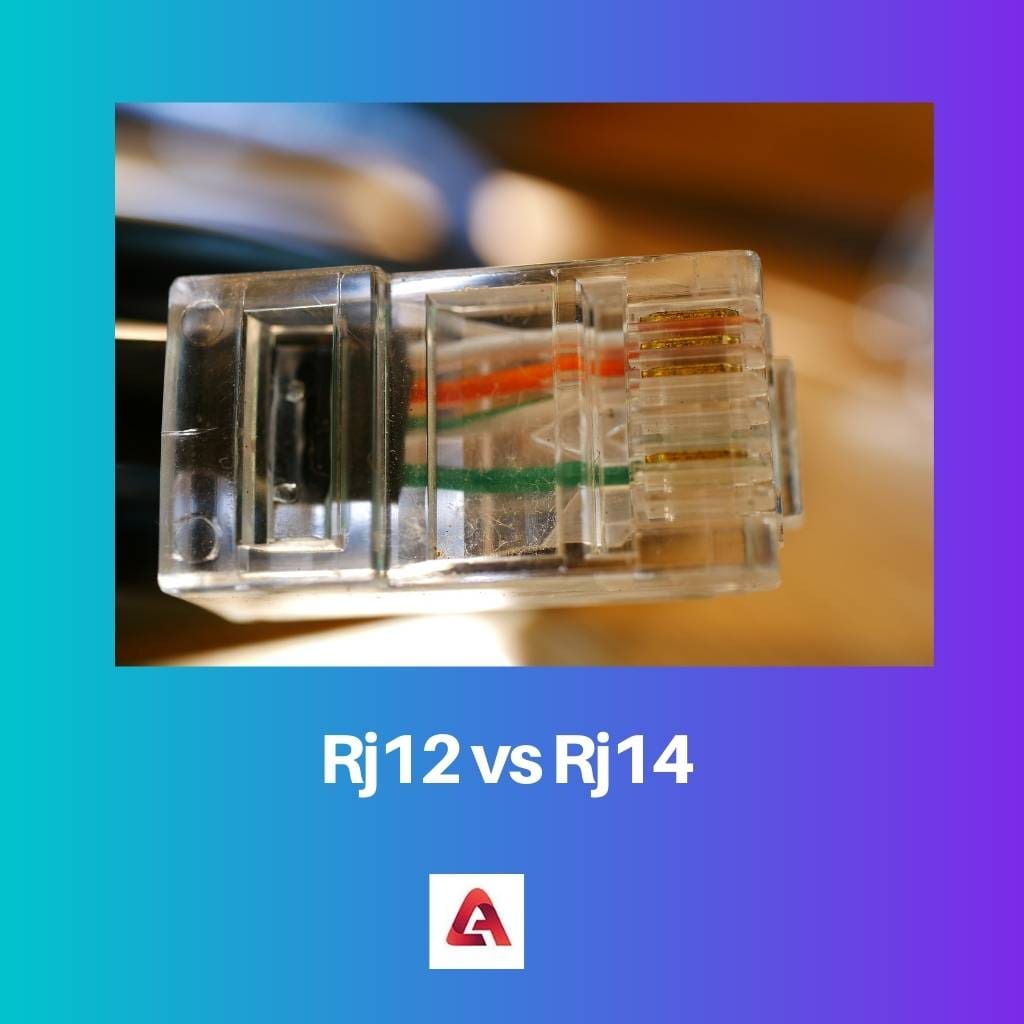RJ 12 and RJ14 are two separate models in structured cabling. RJ, a registered jack, is a connector mainly made and used in networking applications. The name ‘Jack’ applies to the female connector, although the standard does not alter the gender of the connector.
These connectors are also related to “modular connectors. The RJ standard is initially designated for the wiring of telephone networks.
Key Takeaways
- RJ12 and RJ14 are phone connectors used for landline telephones, but RJ12 has six contacts, while RJ14 has four contacts.
- RJ12 can support up to two phone lines, while RJ14 can support up to four.
- While both connectors are compatible, the number of contacts in the connector determines the maximum number of phone lines that can be supported.
Rj12 vs Rj14
RJ12 or registered jack 12 uses a 6P6C configuration which can connect up to 6 wires simultaneously. It is a compact shaped device that is used to establish a single telephone connection. RJ14 or registered jack 14 has a configuration of 6P4C and can be used to establish two telephone connection.

Rj12 is a 6 position 6 conductor wiring type which means 6 points of the socket will be filled by 6 conductors or cables. Traditional home phones use RJ11, and corporate PBX working with essential phones or Digital Phone Systems works with RJ12.
In some telephones, configure 3 phone lines (3 CO lines) for an operator to respond to 3 various phone lines. Those kinds of telephones are commonly connected via RJ12 connectors.
RJ14 connector holds 6 points, of which 4 are connected. The pins are 2, 3, 4 and 5. It is applied for an attachment to two analogue telephone lines. It involves 4 wires for connection. It is utilised to join two telephones. It uses a 6P4C connector type.
RJ14 looks similar to the Rj11 connector, but it includes two extra-thin copper strips placed in the grooves underneath the plug.
Comparison Table
| Parameters of Comparison | Rj12 | Rj14 |
|---|---|---|
| Definition | Rj12 or registered jack 12 is a connector jack that will join a primary telephone system with private lines using a line circuit. | Rj14 or registered jack 14 is mainly used for connecting double or two telephone lines. |
| Use | They are mainly to connect telephone lines. | They are mainly used to connect double lines. |
| Works On | They can only work on 6p6c conductors. | They can only work on 6p4c conductors. |
| Cables | They make use of 6 cable wires when connecting. | They make use of 4 cable wires when connecting. |
| Conductors | They make use of 6 conductors. | They make use of 4 conductors. |
What is Rj12?
The full name of Rj12 is registered as jack 12. A connection jack joins a primary telephone system with private telephone lines by a line circuit. It is a male plug and individually combines with an ameRj12 female jack to secure the connection that is required for the combination.
The Rj12 employs a 6 positions 6 conductor connector. It has six slots for attachment use, and every six spaces are utilised for communication. Specific RJ12 6-flat ribbon-approved cables are worked for Rj12 connectors.
This cord carries six thin copper cables and transfers & collects electrical beacons by the use of it.
In this standard ribbon cord, each six copper wires are colour coded. These colours include: white, black, red, green, yellow, and blue. Despite different wearing systems, the Rj12 is entirely diverse and complicated.
The cable professional must install the copper-wearing method in order to make it operative.
The Rj12 connector was widespread amongst the people in the eighties because the corporate offices in that era required centralised telephone lines. The Rj12 connector is used to set up telephones in offices with a centralised wire easily.
Even though we are in the 21st century, Rj12 connectors are used to set up intercom telephones in corporate offices to this day.

What is Rj14?
The full name of Rj14 is registered jack 14 connectors. It comes with 6 positions in which 4 of them are placed. The pins are 2, 3, 4 and 5. It is utilised for attachment between two analogue telephone wires. It comes with 4 cables for connection. Rj14 is used to join two telephones.
It makes use of a 6P4C connector type to get the job done. RJ14 has a six-position, four-conductor (6P2C) modular jack.
RJ 14 has a similar appearance to RJ11; the only difference is that RJ14 comes with two extra-thin copper strips, which are cleverly placed underneath the grooves in the plug. The RJ-14 is mainly used for two-line service.
This connector type is utilised when the connection has multiple lines heading to a single phone unit.
The difference between Rj11 and Rj14 is almost impossible to spot for someone who doesn’t know registered jacks. They come in the same size, shape, and format, and they both have the same amount of pins.
The difference is that Rj11 comes with only two contacts, whereas an Rj14 connector will come with 4 contacts. Rj14 connects two telephone lines, whether in a corporate office or at home, but they need to be placed and installed precisely for a person to use them.

Main Differences Between Rj12 and Rj14
- Rj12 works on a 6-position and 6-conductor system, whereas Rj14 works on a 6-position and 4 conductors.
- Rj12 connectors are mainly used in telephone lines, whereas Rj14 connectors are used for two-line services.
- Rj12 makes use of 6 cable wires. Meanwhile, Rj14 makes use of four cables only.
- Rj12 can accommodate two single telephone lines, whereas Rj14 can accommodate double.
- Rj12 can only work on 6p6c conductors, whereas Rj14 can only work on 6p4c conductors.



